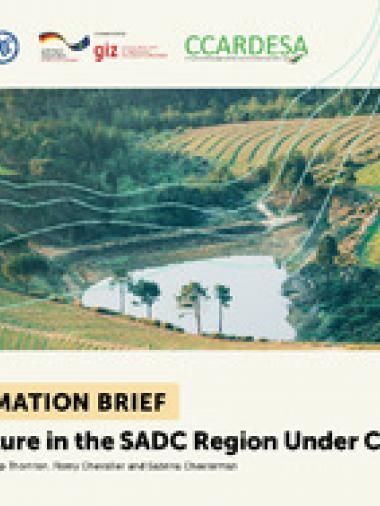Agriculture in the SADC Region Under Climate Change

The agricultural sector is of major social and economic importance in the SADC region. Several climate hazards including drought, unpredictable and extreme rainfall events, heatwaves and strong winds are adversely affecting the region’s predominantly rainfed (95% of cultivated area) agricultural sector The most common climate hazards that affected the SADC region between 1970 and 2020 were drought and extreme rainfall events. By 2059, it is projected that drought will be a widespread and common occurrence with extreme rainfall events affecting most of the northern areas of the region. Climate hazards impact all actors along the agricultural value chain from pre-production to consumption. These impacts are further complicated by a variety of external trends and drivers of change. To move towards a more resilient agricultural sector there is a need to implement enabling policies and public and private investments, adopt innovative technologies and good agricultural management practices.
Citation
Gosling A, Thornton P, Chevallier R, Chesterman S. 2020. Agriculture in the SADC Region Under Climate Change. SADC Futures: Developing Foresight Capacity for Climate Resilient Agricultural Development Knowledge Series. CCAFS Report. Wageningen, the Netherlands: CGIAR Research Program on Climate Change, Agriculture and Food Security (CCAFS).